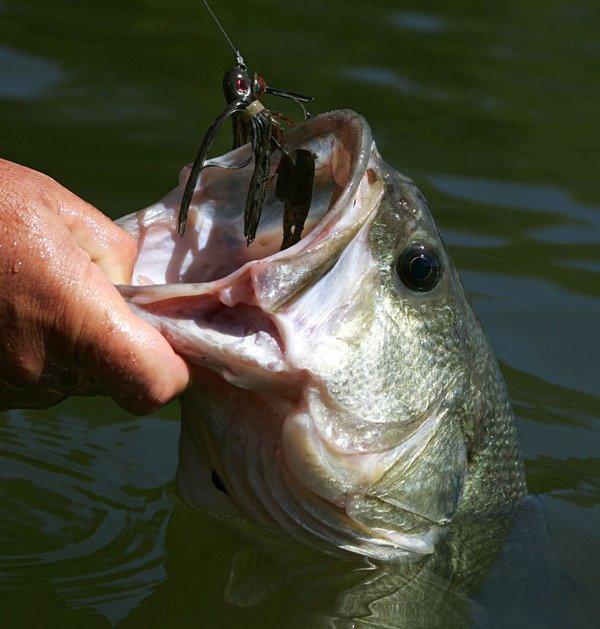We take folks fishing all the time. It’s simply amazing how one angler can make 50 casts to the same area and not get hung up once, but the other person gets hung constantly. It’s really not a slight on the other angler.
It’s not luck that keeps one guy’s bait free and the other guy’s hung. It’s understanding what you’re fishing, how deep you’re fishing, what’s around the area and how to move a bait where it’s not getting stuck in the stuff that attracts the fish to the area. That seems simple when you say it, but anyone who’s lost a favorite bait in a piece of cover knows it’s not as easily done as said.
We’ve compiled some tips that will hopefully keep your baits free and working properly to entice more fish to bite. Understanding why this is important will probably give anglers a better sense of urgency in learning to fish more efficiently.
The drawback to hanging a lure starts with the presentation quickly becoming unnatural. Baitfish don’t typically grab branches and bend them back and forth. This can often spook fish. Going up on a spot to free a bait can further spook fish nearby, especially the shallower you have to go. Yanking on a hung lure can stretch line, damage hooks and further impair your presentation. So avoiding it is always a better option.
These tips obviously aren’t foolproof. I hung my favorite crankbait last week. I tried to knock it loose with a plug knocker and still lost the bait. But that was also the only time I got hung all day. Fact is, fishing is much more enjoyable when you’re fishing and catching bass and not breaking off and retying constantly.
Don’t get me wrong. We throw in the gnarliest cover we can find because we all know that’s where the bass live. Don’t avoid the best areas for fear of snagging. Just apply these simple tips.
Get it up
The best advice to give an angler when working bait through cover, especially something like brush is to keep the rod pointed upward to at least a 10 o’clock position. Keeping your rod tip up keeps the bait riding high over rough bottom and cover. Pulling a bait like a jig sideways is great for fishing offshore but when you feel it get into a piece of cover, pull the tip up and try to shake or abruptly hop over the object. That often triggers a bass to strike.
Cut weight
Quite simply, the shallower you go, the lighter your weight should be. You don’t need a 3/4–ounce jig in 3 feet of water, unless maybe to punch through some cover. But if you’re casting say a worm to isolated cover in shallow water, lighter is better. A heavier bait is going to slide into crevices and it’s hard to hop a heavy lure over snags in shallower water.
Need for speed
If you’re bait is ticking bottom or starting to hang during your retrieve, adding a little speed will often times keep it riding on top. We often fish a crankbait with rod tip in the air and almost fish it like a plastic worm, pulling it over shallow cover easily, then reeling up the slack and repeating. Retrieve a little faster to pull the bait up and not allow it to get down into snags.
In with the new
If you’re fishing plastics, you always want to maximize your dollar and try to get as many fishing with a bait as you can before discarding. The problem is that worn plastic exposes your hook more easily with less pressure on Texas rigs which often leads to the hook driving into cover. If you can’t get good hook point sticking at the body of the worm because it’s tearing too much, it’s time to get a new soft bait.
Use the force
You’ve got to know when your line is getting heavier because the bait is being pulled up and over something. More drag is created and your bait begins to weigh more. This is the time to slowly work it up and over the limb or snag and then once free, kill it and let it fall.
Much of the time, bass watch lures come over cover, and just as they free, the change in action triggers the bass into striking. The key is to really weigh a lure like a jig or a worm from the start of a cast to the end. Soon you’ll be able to detect when the bait is being dangled and hanging from a piece of cover, thus causing more drag on your line. A sure sign you’re about to hit some cover.
Again, these tips aren’t fool proof, but we promise it will keep you fishing more and trolling up to unhook your snags less.












